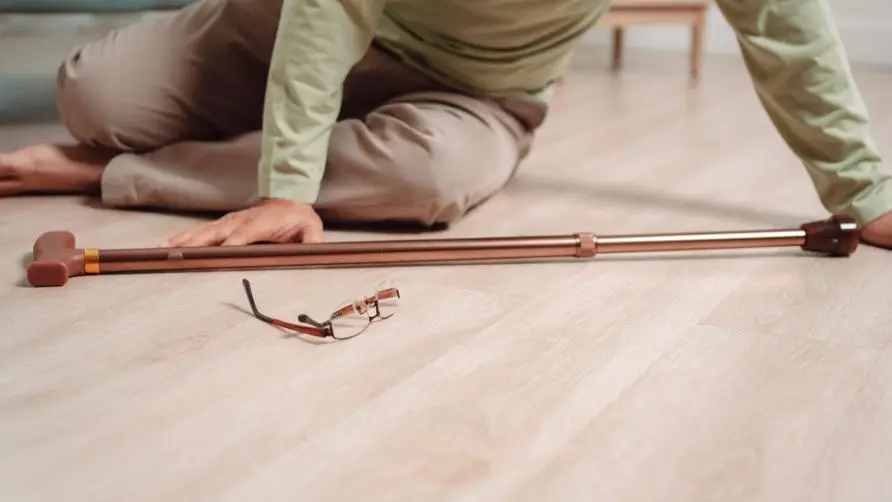Don't just train muscles and ignore "cardiorespiratory endurance"! May increase the risk of dementia and depression. Use AI to self-assess heart and lung health in 2 minutes.

Don’t just train muscles and ignore cardiorespiratory endurance! Beware that you are more likely to suffer from dementia and depression
The latest statistics show that among the top ten causes of death in Taiwan, four are related to cardiopulmonary function. The reasons for neglecting cardiorespiratory endurance vary among age groups. Perhaps due to the popularity of strength training, young people pursue muscle building and do less cardiorespiratory training. For seniors with silver hair, they may lack cardiopulmonary endurance testing tools, coupled with reduced activities during the epidemic, resulting in reduced cardiopulmonary endurance and increased risks of disability and other comorbidities.
In fact, cardiorespiratory endurance is an important physical fitness indicator, related to the body’s oxygen uptake capacity, and affects respiratory, heart, circulation, muscle and other systems. Chua Meiling, associate professor at the Institute of Physiology at National Cheng Kung University, pointed out that cardiorespiratory endurance will affect the oxygen supply in the blood. The worse the cardiorespiratory endurance, the more likely it is to cause cognitive dysfunction, which will also increase the risk of bone loss, depression, dementia, disability, etc.
Professor Cai Meiling said that foreign literature found that compared with those with medium cardiorespiratory endurance, the onset of dementia was delayed by 5 years in those with high cardiorespiratory endurance. People with low cardiorespiratory endurance also had a 47% higher risk of developing mental health disorders. In addition, some studies have pointed out that aerobic exercise can reduce the risk of dementia by 28%. The importance of cardiorespiratory endurance is self-evident as it affects brain nerve repair and even emotional problems.
2-minute stepping test combined with AI tool improves cardiorespiratory endurance by 20% in 3 months
As early as 2016, seven major medical associations in the United States jointly issued a statement stating that cardiorespiratory endurance is an independent factor in predicting cardiovascular disease. However, Associate Professor Cai Meiling pointed out that the hospital’s exercise cardiopulmonary function testing is too intense and not suitable for the elderly or those with dangerous diseases. Since 2017, it has been generally believed that the “2-minute step test” needs to be small in space, easy to perform, and uses the thigh muscles, which is closer to the real state of climbing stairs, and is suitable to replace the 6-minute step test as a test method for the elderly’s cardiorespiratory endurance.
Associate Professor Cai Meiling emphasized that there is a significant gap between urban and rural areas in terms of mortality and incidence of cardiovascular disease. Elderly people in rural areas are more likely to face higher risks of disability or disease due to poor cardiorespiratory endurance. In addition, the closure of community bases during the epidemic has resulted in the reduction of activities of many community elders, and more people are disabled or living in long-term care institutions. There is an urgent need to promote technological tools that can test cardiorespiratory endurance at home.
Associate Professor Cai Meiling explained that the current plan is to use AI technology tools to allow elders to test their four physical fitness indicators of flexibility, cardiopulmonary endurance, muscle endurance, and balance in the community, and then conduct yoga warm-up and bathing sessions based on the corresponding scores. Breathing, upper arm curling, lower limb stepping and other training movements. Actual measurements have found that elders who participated in corresponding training improved their cardiorespiratory endurance by an average of 20% in three months.
Associate Professor Cai Meiling said that by combining the 2-minute step test with AI technology tools, it is expected that cardiopulmonary endurance testing will be like measuring blood pressure in the future. People can test at home by themselves, or through the promotion of community bases, seniors can strengthen each other in community activities. , drive the peer motivation effect and contribute to the health promotion of the elderly in the overall community.
1/3 of young people have unsatisfactory cardiorespiratory endurance? Cardiopulmonary endurance “use it or lose it”, don’t ignore it
Professor Zhang Wanrong, director of the Electronic Engineering and AIoT Smart Internet Application Technology R&D Center of Southern Taiwan University of Science and Technology, said that the plan is to use AI technology and human posture recognition to allow the elderly to perform 2-minute steps, arm curls, and 30-second sitting postures at home or in community locations. Standing and other tests, including the 2-minute stepping test, are indicators that focus on assessing the cardiorespiratory endurance of older people.
Professor Zhang Wanrong explained that the main function of the physical fitness magic mirror “iMirror” is to promptly identify whether the movements are correct, count the number of movements, and give score tests to help people assess their cardiorespiratory endurance function at home. Take the 2-minute step test as an example. If a man over 65 years old scores less than 70 points and a woman scores less than 75 points, it is a poor cardiorespiratory endurance index. Care should be taken to cardiovascular disease, dementia, osteoporosis, sarcopenia, etc. risk.
Professor Zhang Wanrong pointed out that in the early stage of the study, a sample test of 18 young people aged 20 to 30 years old found that one-third of them did not have a cardiorespiratory endurance of 80 points, falling into the “orange light zone” standard for seniors. It can be seen that the testing tool is like a “demon mirror” that will truly reveal an individual’s potential health problems.
Cardiopulmonary endurance has a “use or disuse” operating principle, reminding people of all ages to pay attention to cardiopulmonary exercise. It is expected that in the future, AI fitness detection tools, combined with community base and home testing, can help reduce the incidence of cardiovascular disease and narrow the gap between urban and rural areas, while reducing the burden of social medical resources.





